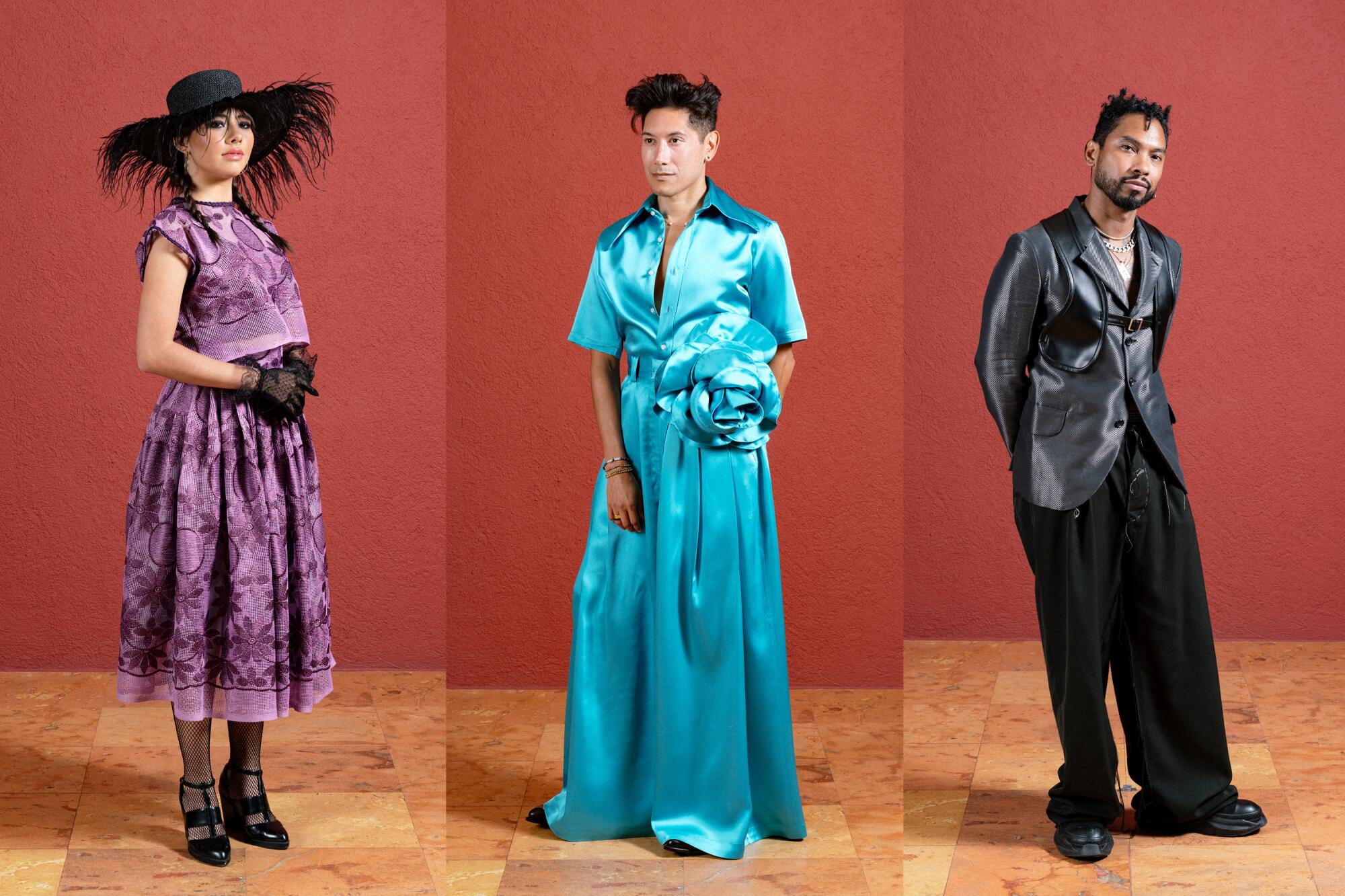
- Share via
On Nov. 1, fine art and celebrity photographer Carlos Eric Lopez hosted his second annual Día de Muertos celebration. The dinner brought Latinx artists, designers, chefs, athletes, musicians and more under one roof at Casa De Plata, an hacienda-style abode by designed by Luis Barragán protege, Ricardo Legorreta. For Lopez, the celebration is about honoring family who has passed and bringing together family who is chosen. With this family portrait, photographer Carlos Jaramillo captured a moment in time with Latinx creatives in L.A. honoring themselves and their ancestors. Here, Lopez tells us about what inspired the night and what it meant to celebrate those who came before.
When I was seventeen, my mother, Josephine Cisneros Lopez passed away suddenly. Her nickname was Josie. She was my best friend. She was my everything. It’s one of those life changing experiences where it was like, “Wow, if I can survive this, I can survive anything.” At her funeral, I’ll never forget, one of the things I said was, “I feel like now I’m living two lives: I’m going to continue living the life she didn’t get to finish and I’m going to continue living my life.” We were a spitting image of each other and our personality was so alike. I feel like when I laugh, she laughs. I go through life is like it’s a celebration [of her].
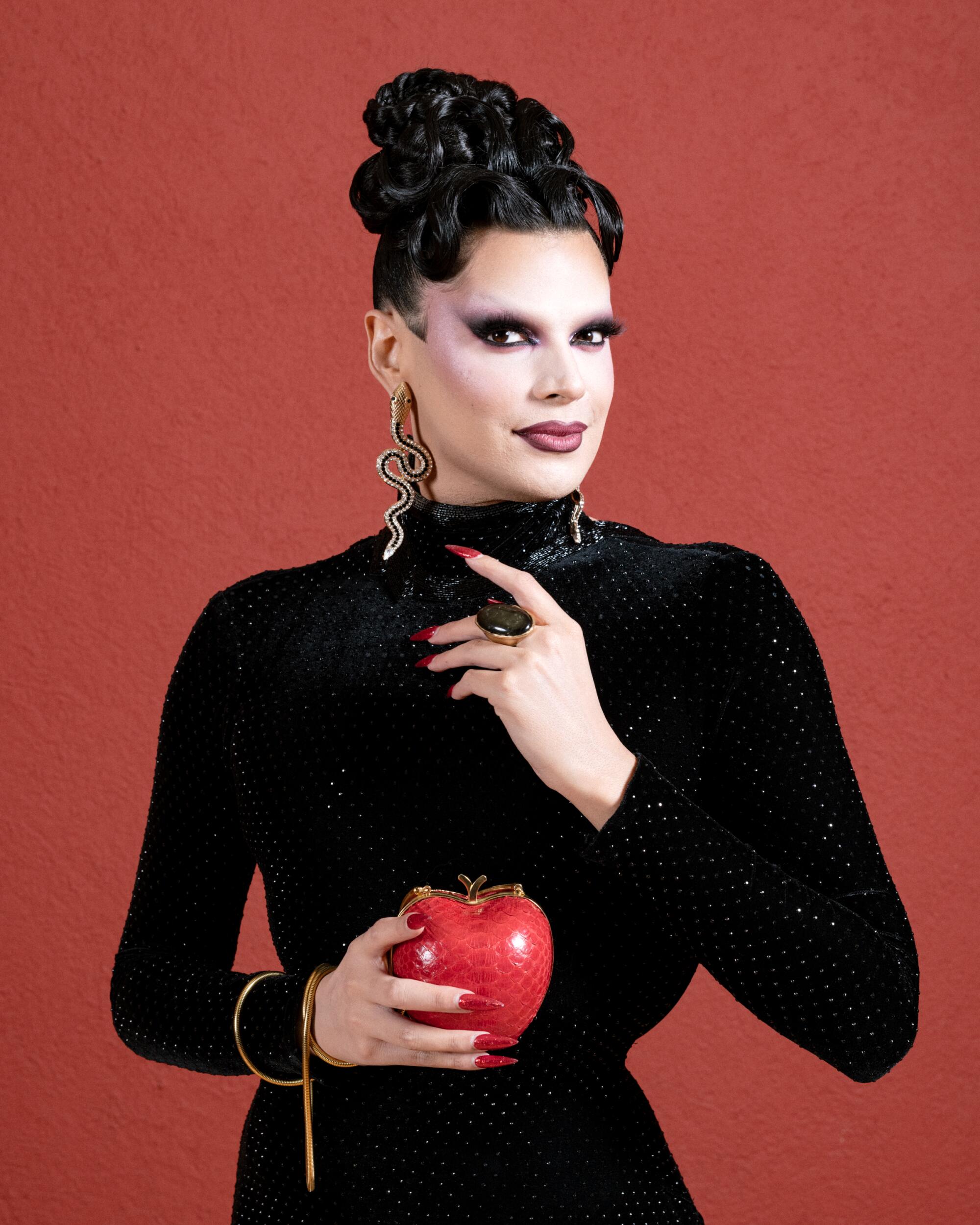
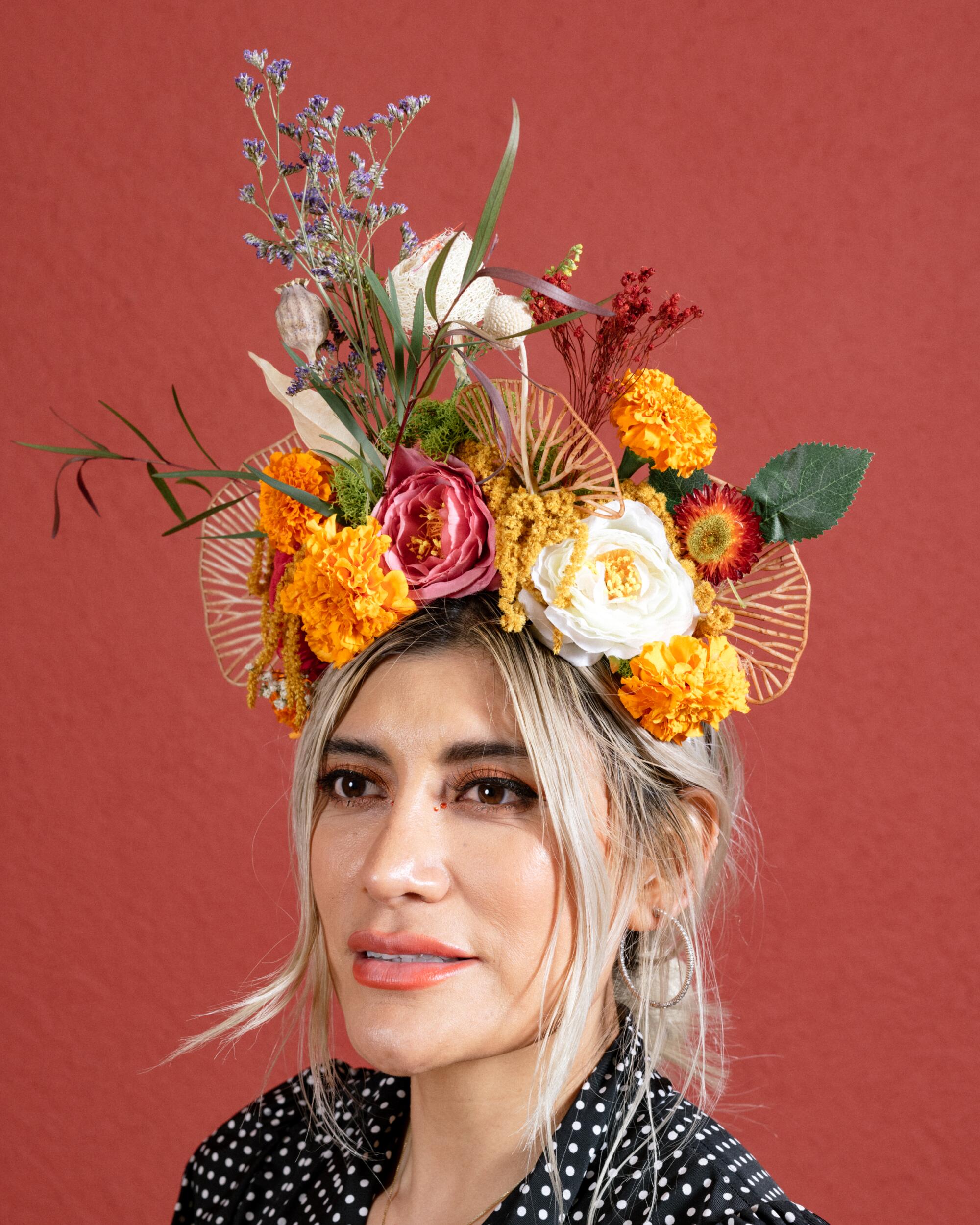
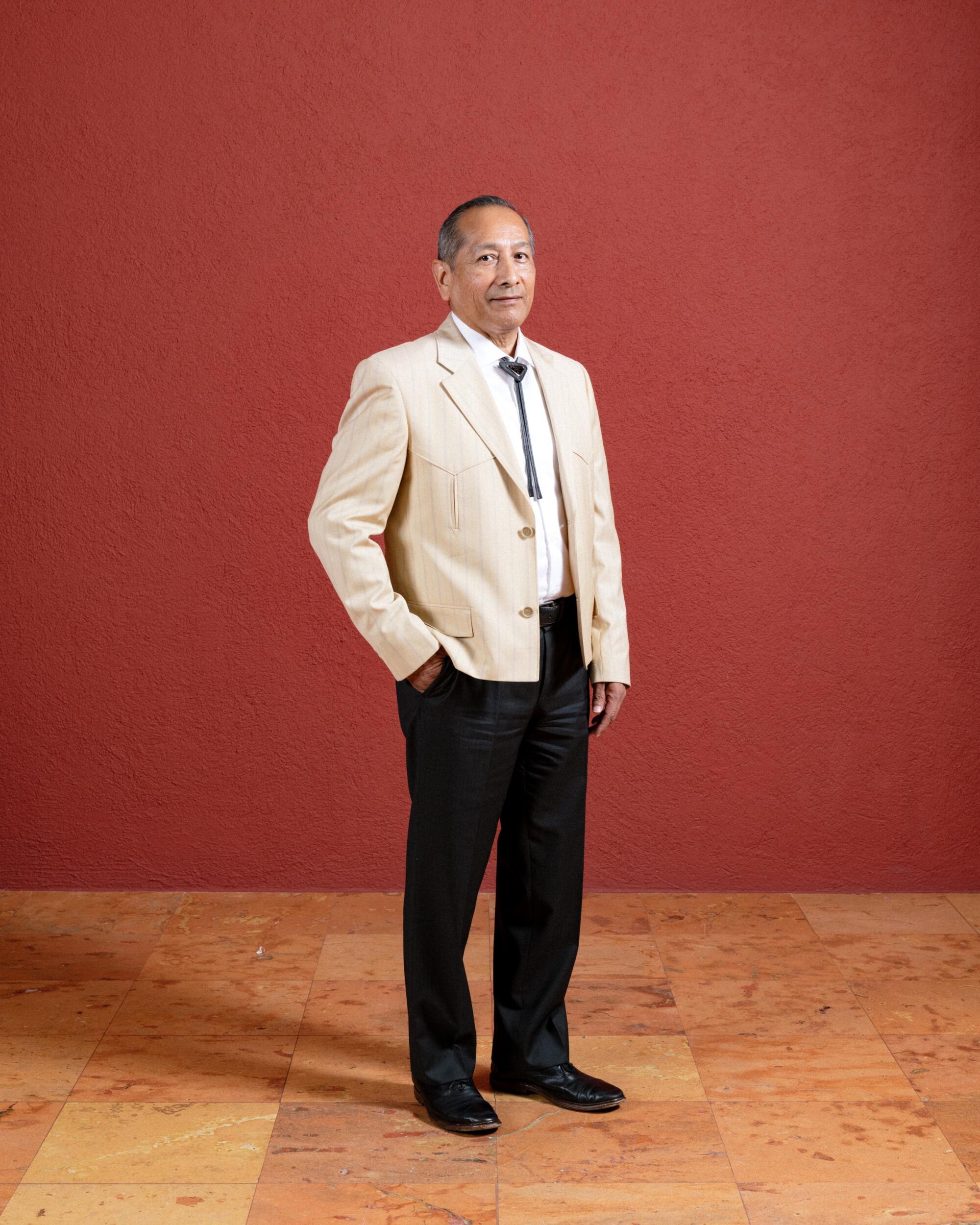
During the pandemic, I lost a lot of family: my grandfather, my aunt, her son, which is my cousin, Michael. They were such close figures in my life that I started to really dive deep into my ancestry, into my heritage. My grandmother would send me letters and photos of my grandfather; he was such a proud Mexican, he was also a proud Texan. I think because I was losing so much family, it was becoming even more important to me to really understand where I came from and what my family might have gone through — and also just the reasoning for their deaths, which was COVID, but the underlying health issues as far as diabetes, high cholesterol, high blood pressure. It really got me thinking of the Latinx community in general. There’s so much disproportion and inequality. I was inspired by Black Lives Matter during the pandemic, when everyone was going out and protesting and marching. It felt so unified and beautiful and special. And it made me think, I really wish there was more involvement in the Latino community as far as togetherness and awareness and really kind of looking out for each other.
In that process is where I developed this idea to have a celebration, which leads us to Día de Muertos. Last year was the first one and it was really important to me because it was the year where the light was shining on all of us and we were able to come out of our houses. It was such a special time, people were still raw in their emotions, they were still trying to figure out their social limits and connecting with others. Being able to hug someone or say hello in person was a very powerful thing.
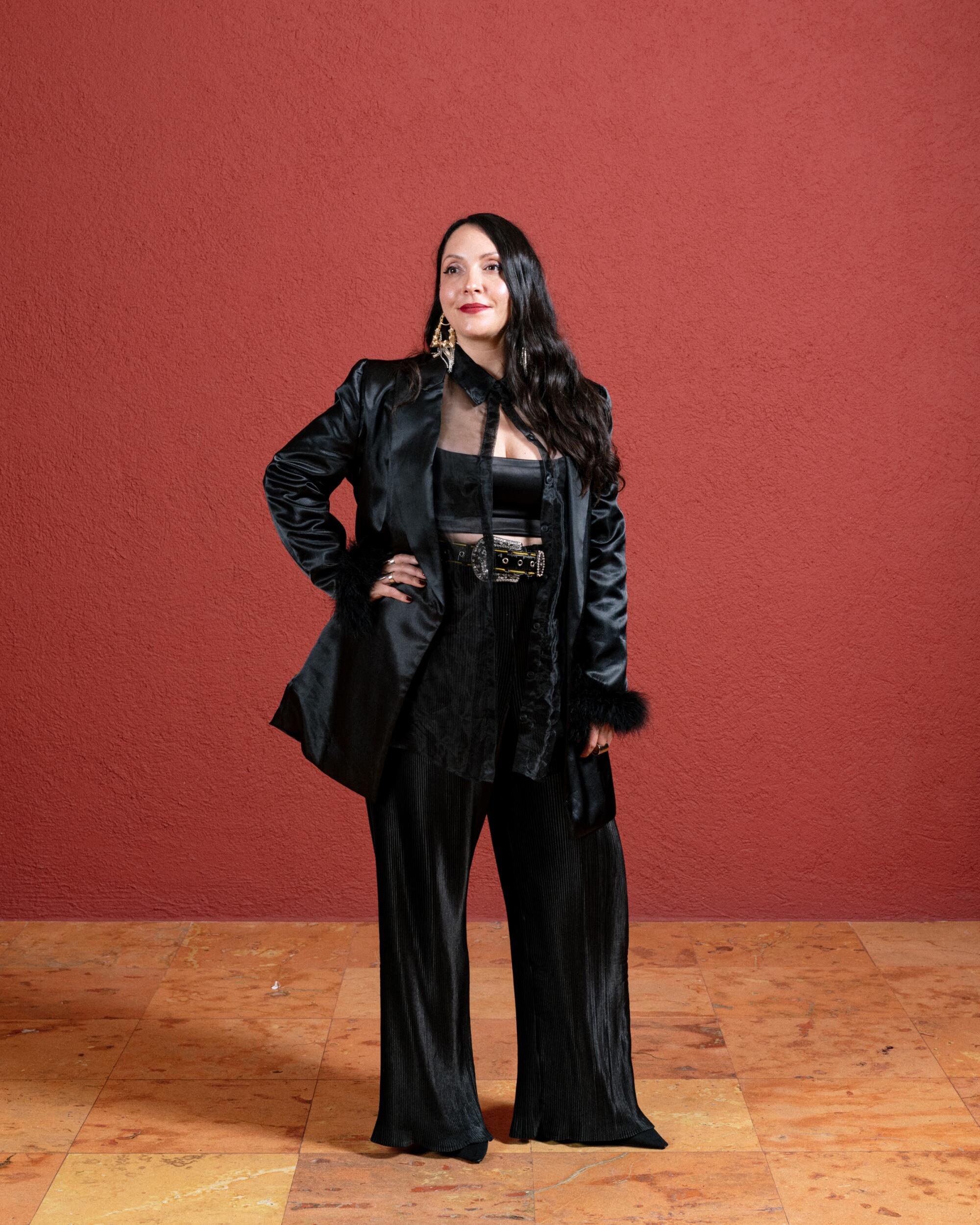
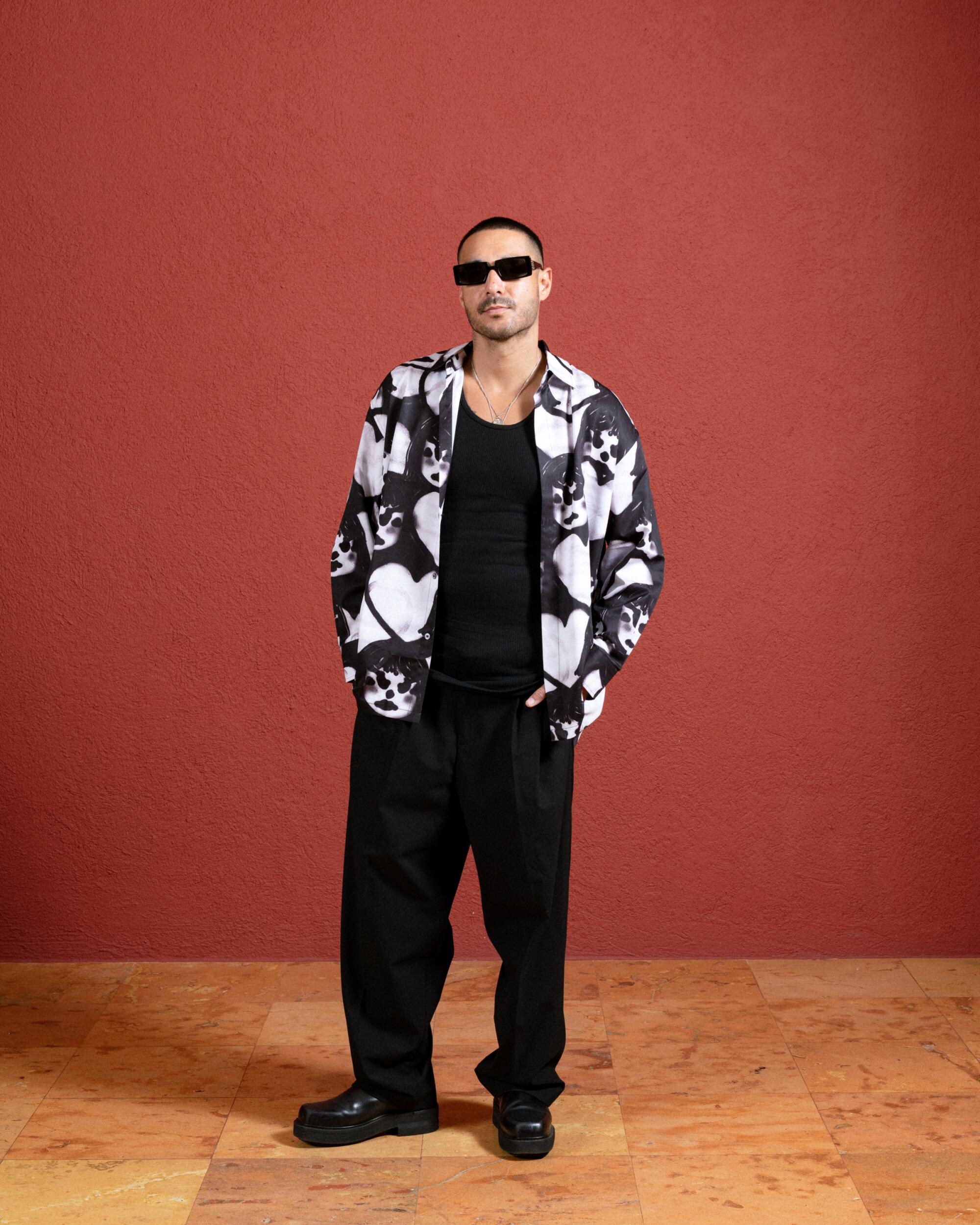
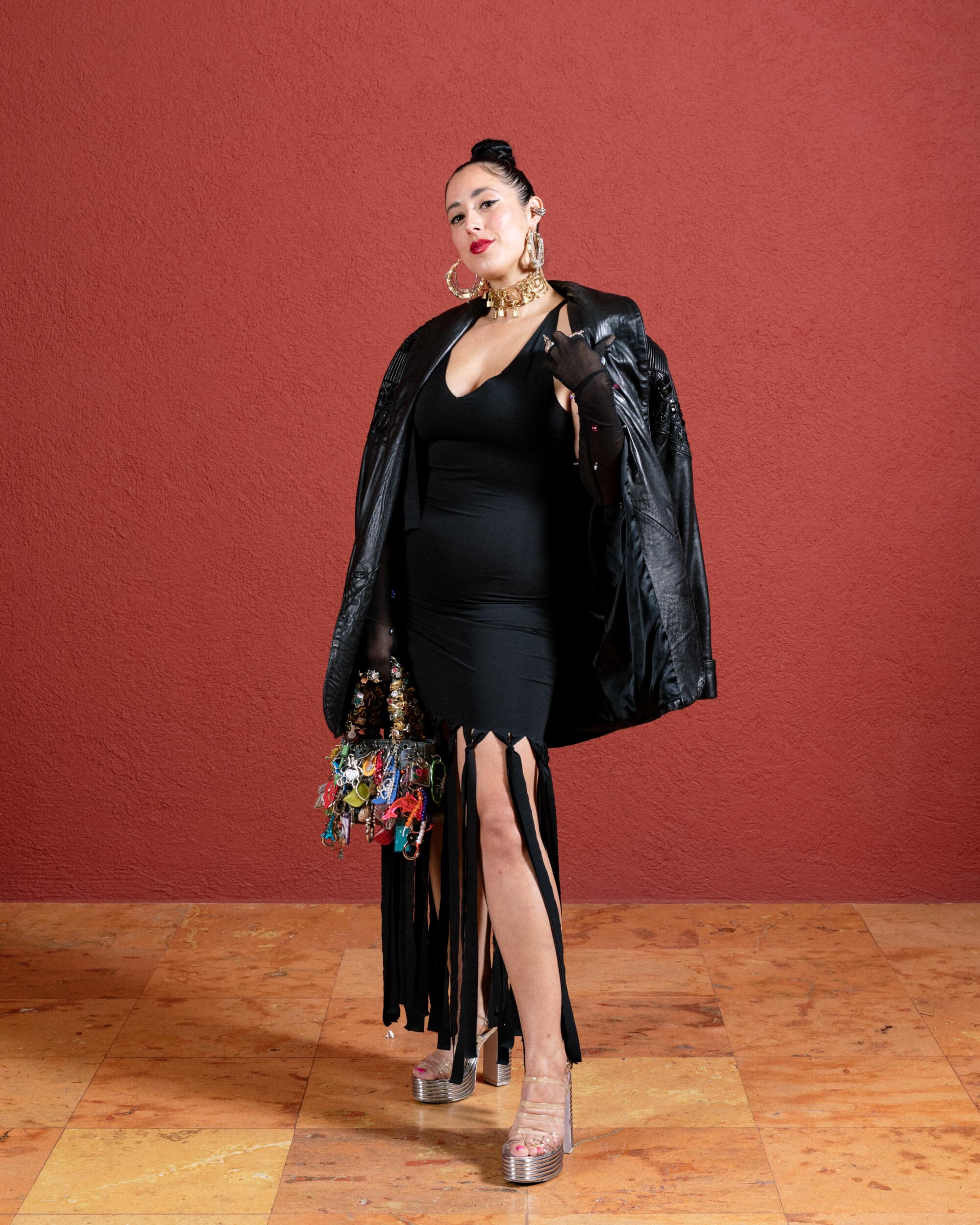
That year, I had a lot of people to add to my ofrenda, my altar. It was an opportunity for me to share my culture, my heritage, the holiday and make it an experiential event that was able to educate and teach a lot of my friends who, to be honest, don’t have a lot Latin friends. (I might be the only one.) I did it in the back of my friend’s house and it came together maybe in two weeks. It was one of the most beautiful things I’ve ever done. I asked everyone ahead of time to send in photos of loved ones who passed and printed them. I framed them. I built this amazing ofrenda. Everything that was curated — from flowers to the chefs to the cuisine, to the entertainment to the decor with all Latin. Eerything was from from local vendors in the community. I was looking at my friends with tears in their eyes, and I know this was one of the first times that they got to experience people from another part of L.A.
After the dinner, so many people were DMing me, calling me, saying, “I need to get on this invite list next year.” This was supposed to be a one-off, but I thought, “You know what? I am going to do this again this year. And I’m going to do it a little bit differently.”
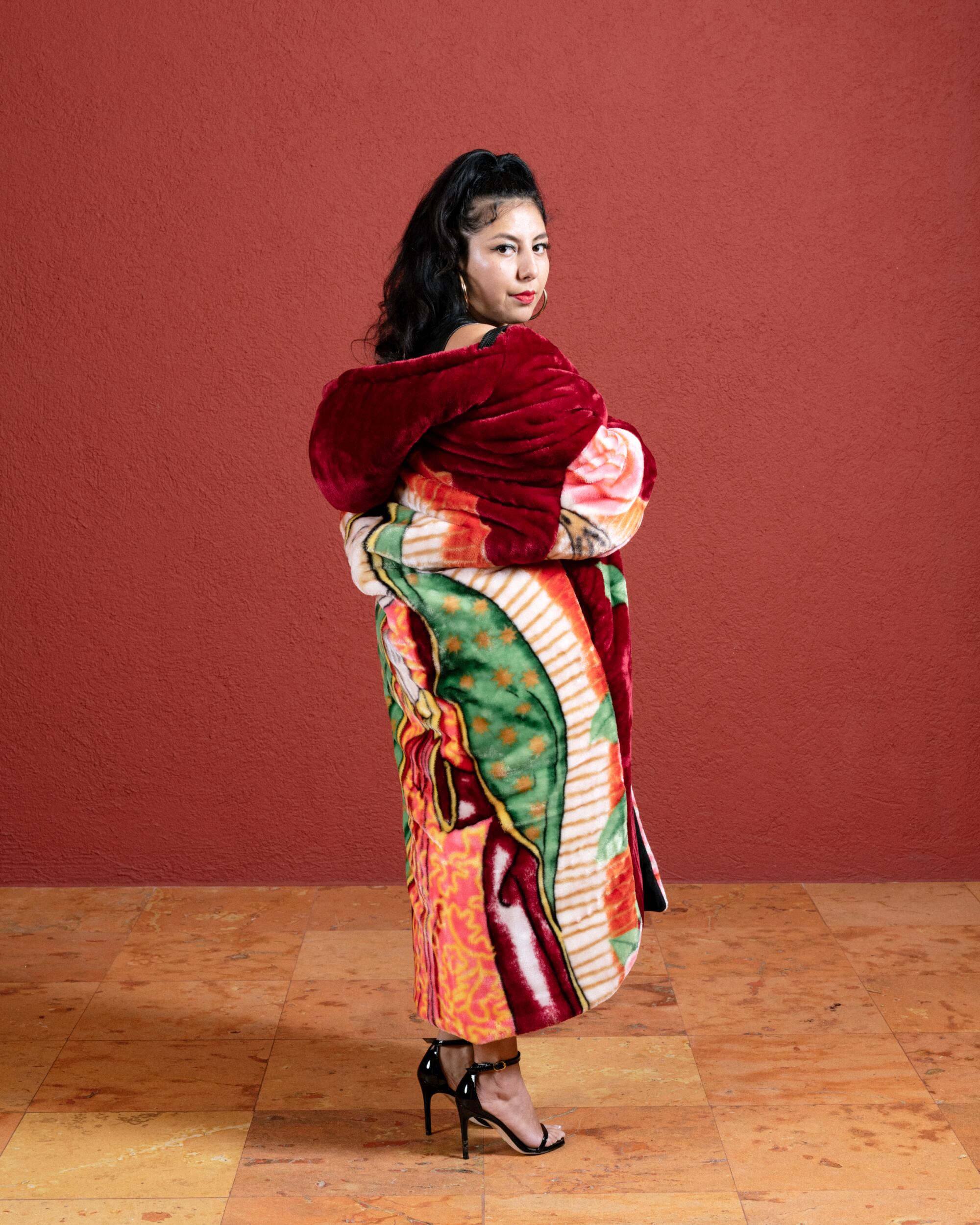
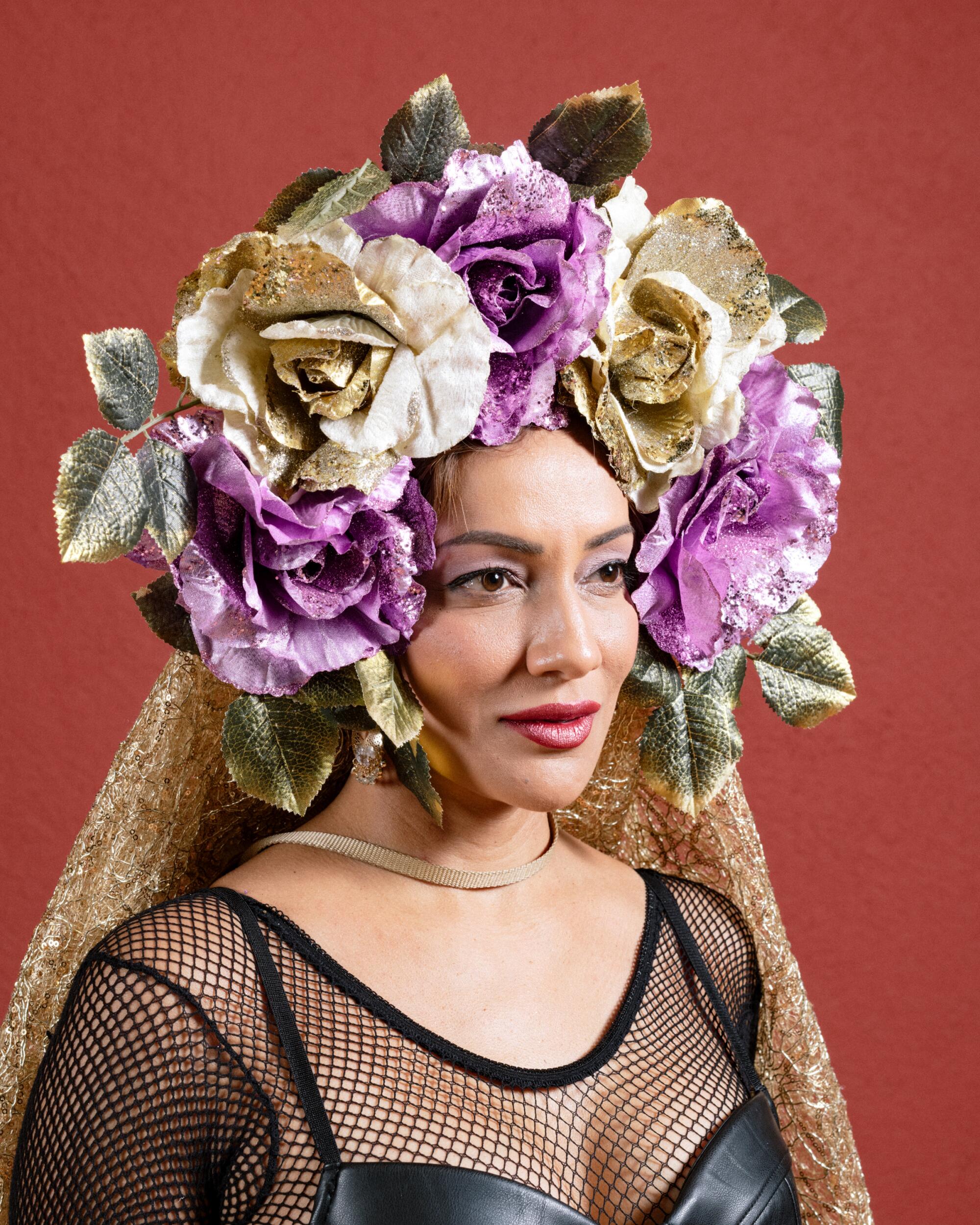
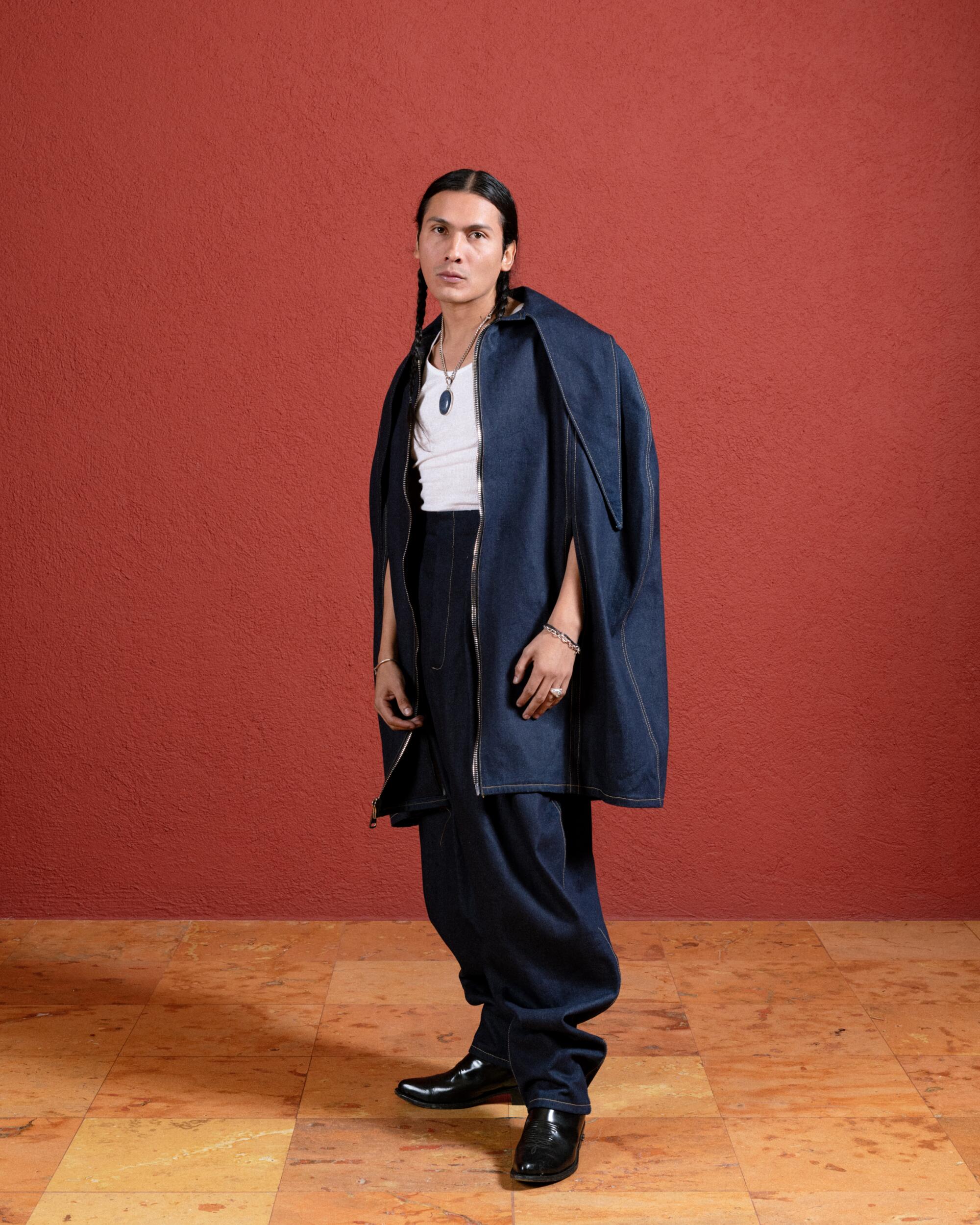
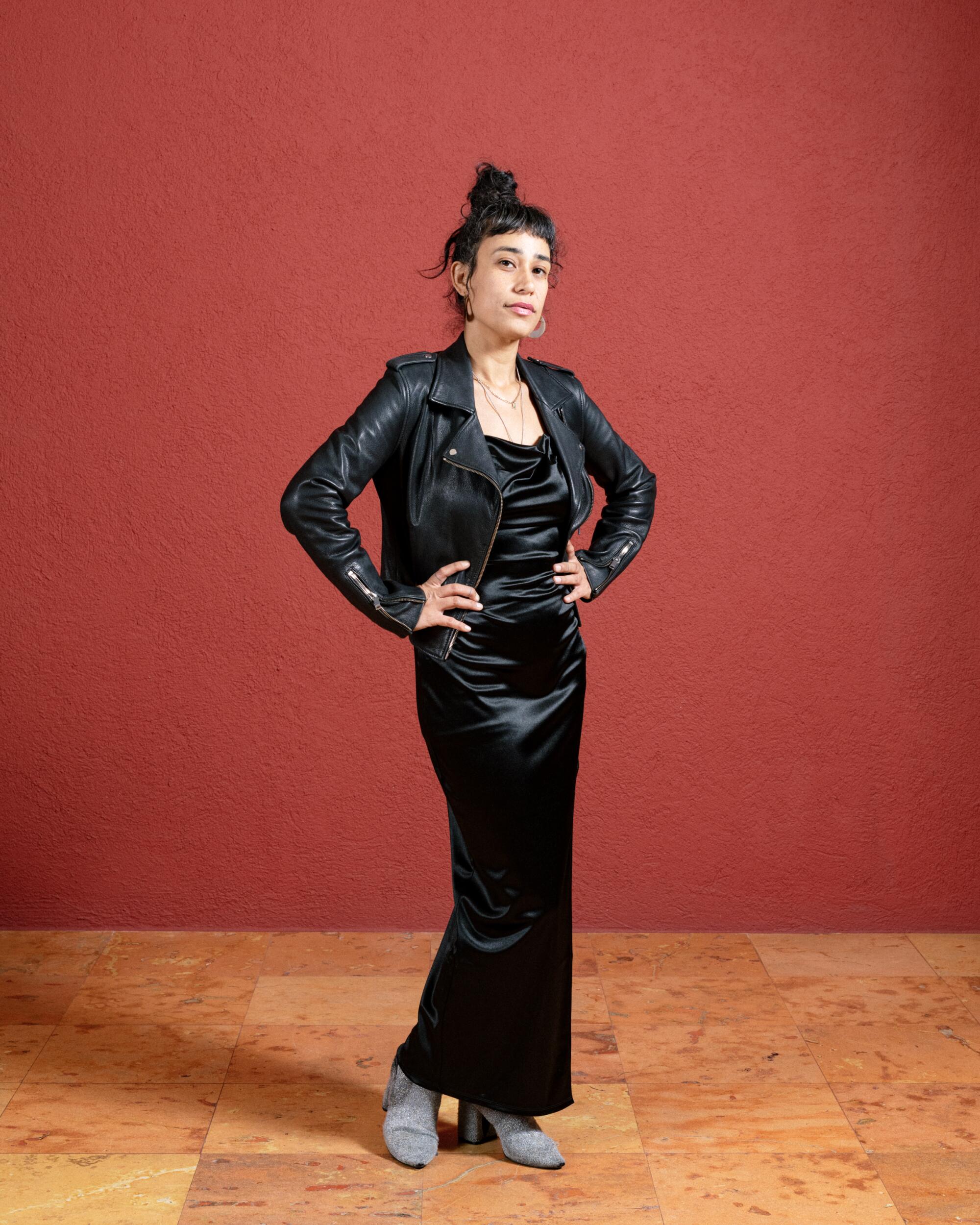
Everyone will have a seat at the table. Everyone that is in different communities, in different industries — you can be an actor, you can be a boxer, you can be an astronaut, you can be a chef, the taco king of L.A., you could be any walk of life in the Los Angeles community and be able to come to this dinner. What excited me about this idea is that it is seat at the dinner for the Latin community. And not only that a seat at the table, but it’s a seat at a table built by Mexicans, built by Latinxs, for Mexicans, for Latinxs.
It’s a time for us to be able to shine our lights, but also reflect on bringing others up. And also reflect on being a part of a mass community versus the communities that were often stuck in. I think to see other Latinos in different industries and to understand different neighborhoods and to understand different people’s walks of life in life … being able to have these conversations and all be in one room and all be celebrating something at the end of the day [is special].
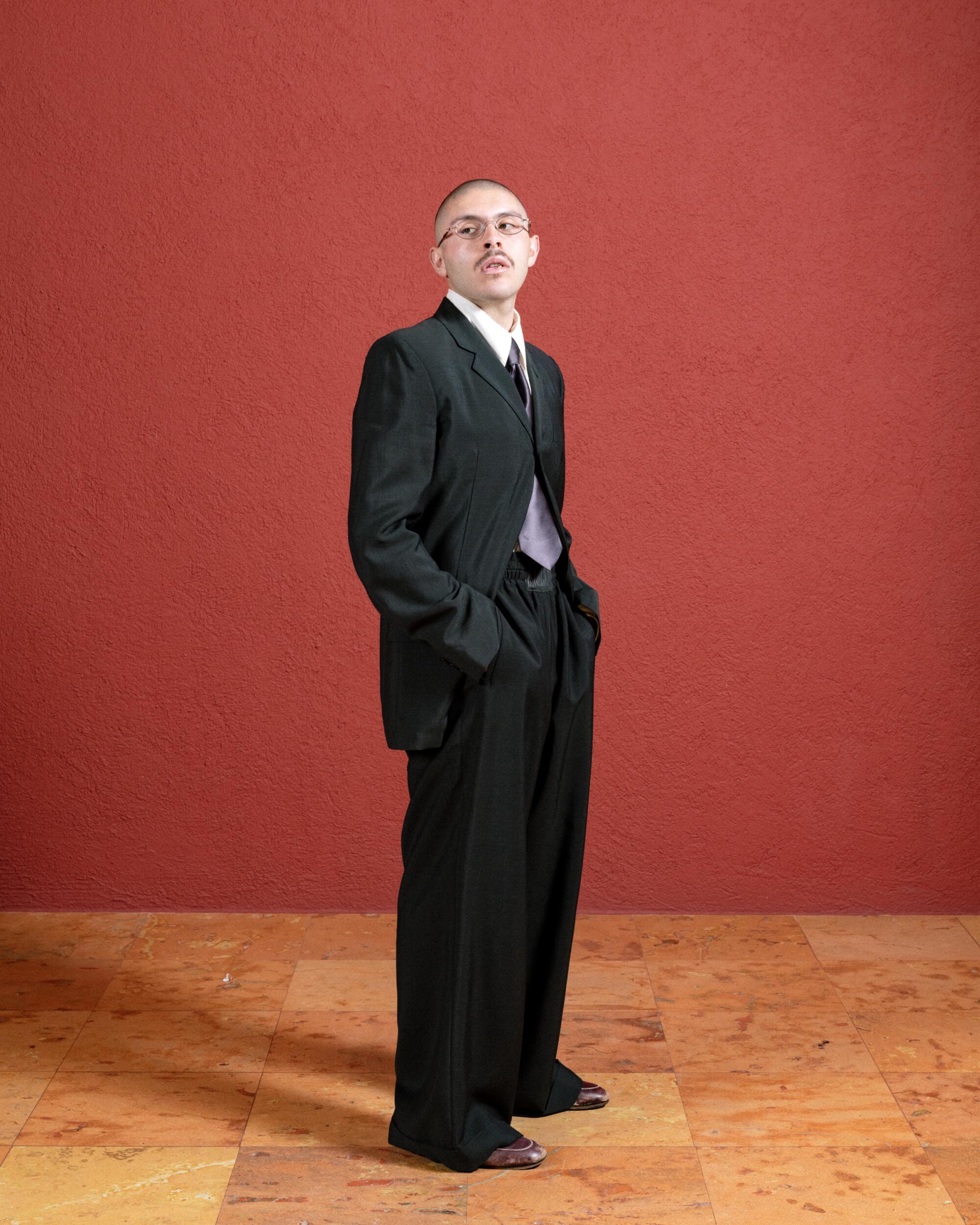


That’s the most important to us: familia. We all have our family and we all love our ancestors who have come before us. This is what’s so important about the holiday — it’s about those who walked before us. Those who maybe crossed borders, those who maybe cried and laughed and had failures and had successes. Those are people are who I strongly believe I am [made up of] today. I’m here, being able to sit here and talk to you, because of all the Lopez, the Cisneros, the Vazquez, the Ibañez and Canos. All the people who gave me the opportunity and the confidence to do what I’m doing.
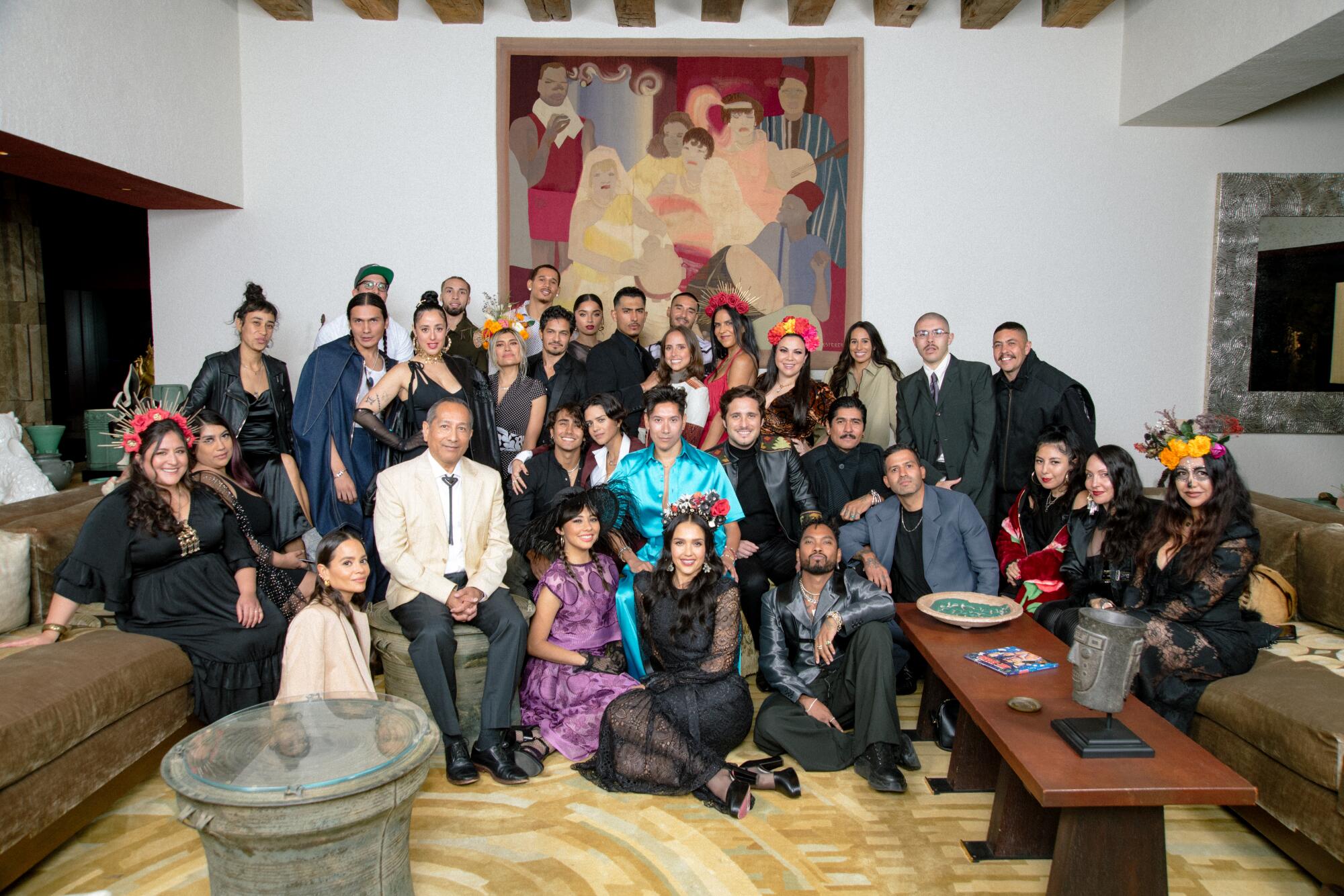
Like I said, I feel like when I’m laughing, my mom is still with me. So I carry all these parts of my family from the past to today. This is how I look at life: like it’s a celebration. Every day is a celebration no matter what is the issue, and what the trauma that we’re dealing with is.
This is what we’re doing now. There were four pillars when I was making this event that I really wanted to touch on. I based it off the ofrenda. When it comes to celebration of our ancestors, when we build our ofrenda, we put pictures up, which is visual. We put their favorite foods in front of their picture, which is culinary. Oftentimes, they’re wearing their favorite clothes or their makeup in the photo, which is the fashion element. And then there’s music [or entertainment] — music was such a big, emotional experience in my house. My grandfather and I used to listen to Chente [Vicente Fernández] all the time. These four important feelings and emotions capture culture, that involve all the senses, and that really are able to highlight different people in the industry.
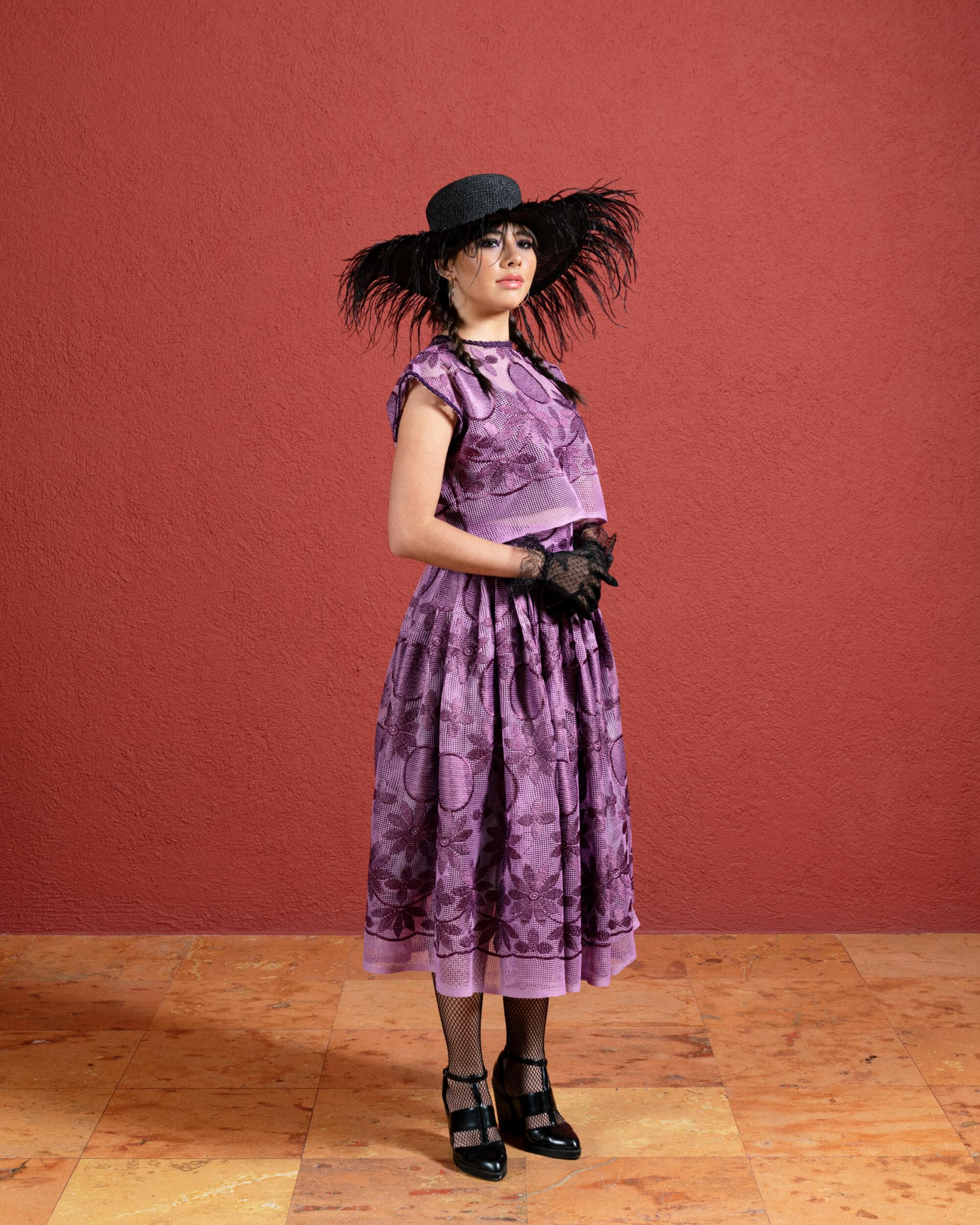
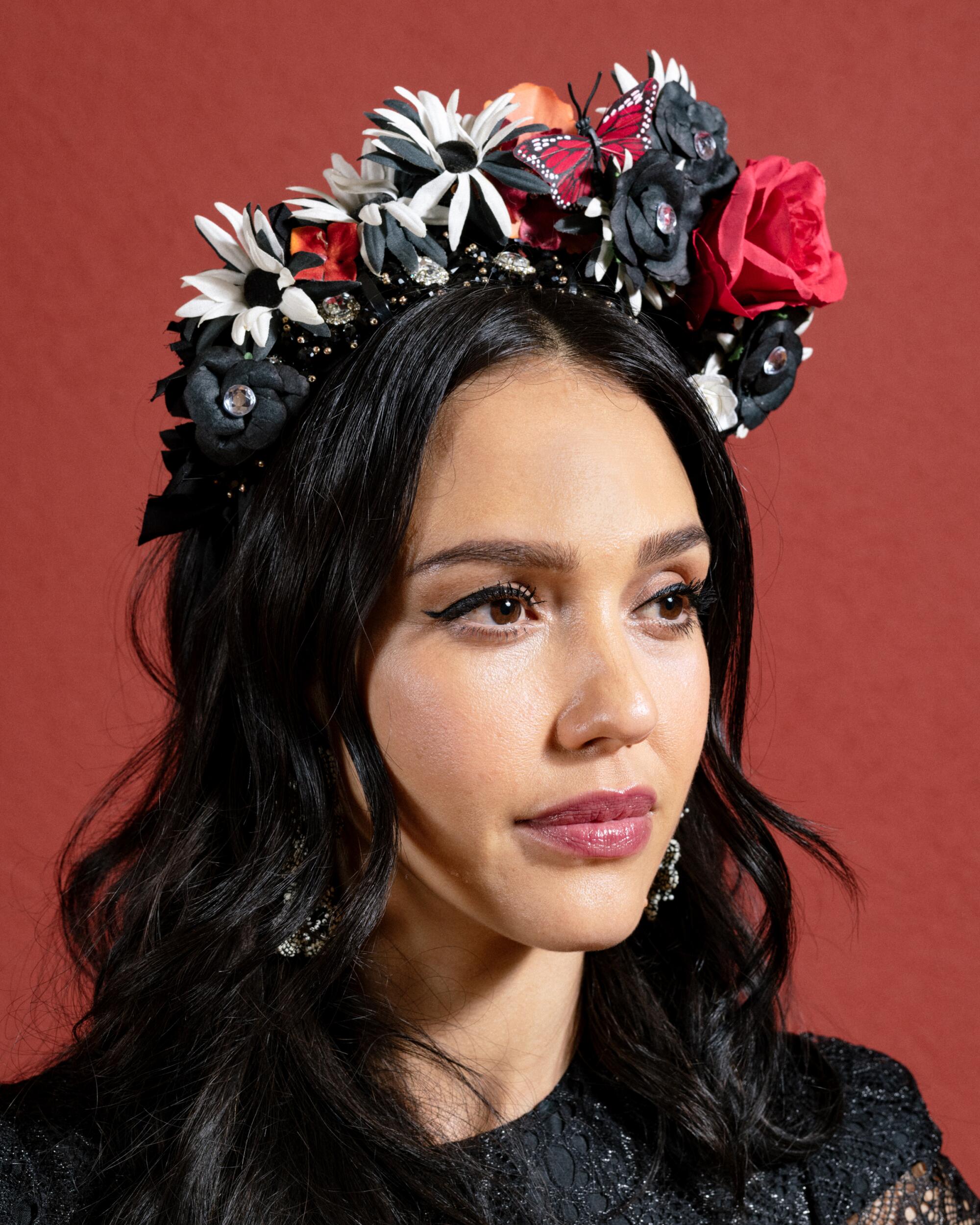
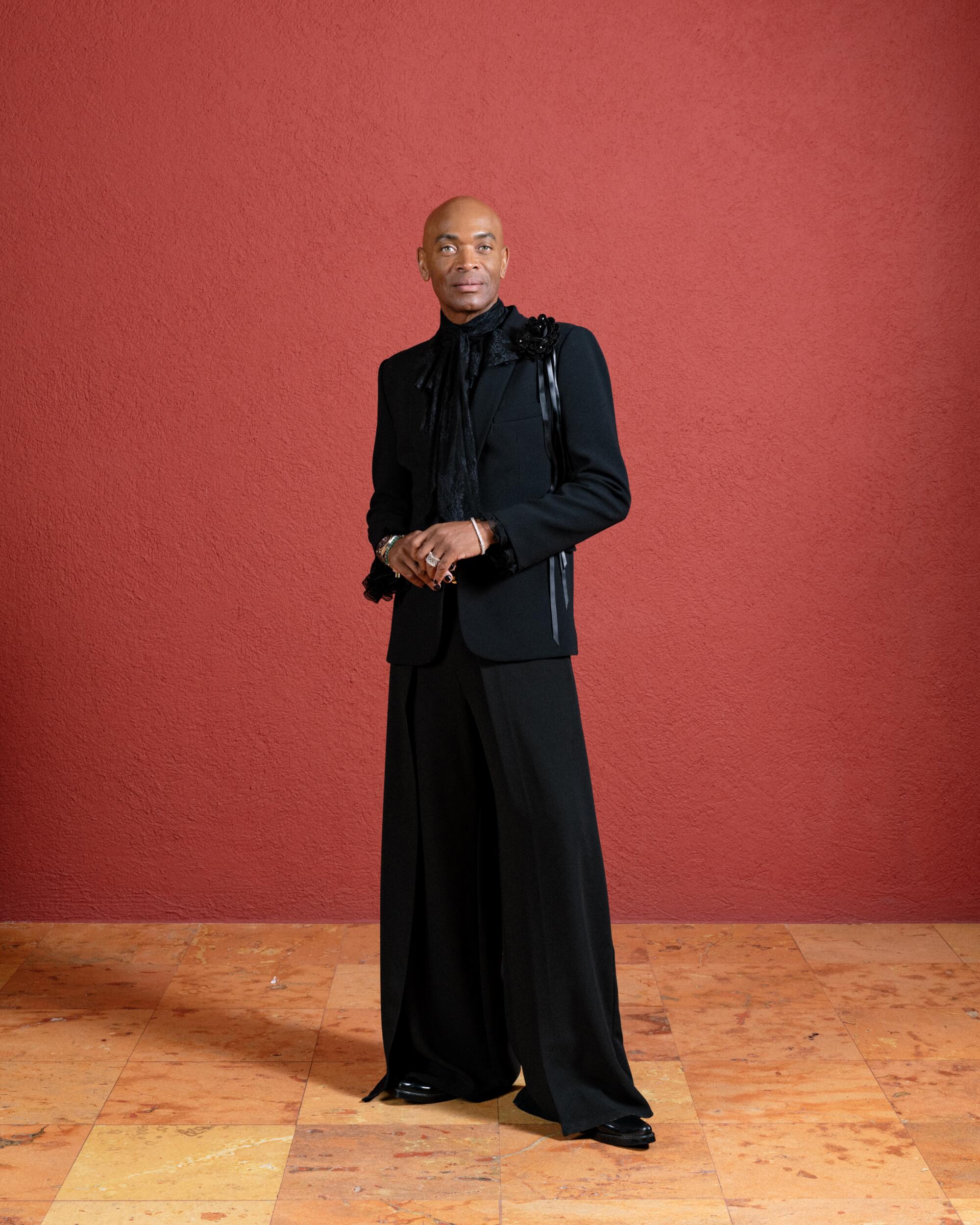
For the culinary part, we’re working with Chef Claudette Zepeda, who was one of the two time winners of “Iron Chef: America” and “Iron Chef: Mexico.” And it was important for me to bring last year’s chef, Juan Chan of Ek’Balam Yucatan Cuisine. He’s an indigenous Mayan chef and he’s like family now. I wanted to celebrate and highlight the cuisine and for people to be able to try different dishes that are representative of the holiday as well.
Then there was the entertainment aspect. And this was something that I wanted people to be able to hear and see. When the dinner starts, we have Stephanie Amoro. She’s a Latinx, Grammy-nominated singer who was on “La Voz.” She’s going to walk out seeing “La Llorona” accompanied by Folklor America, who I had last year. The folklorico dancers are going to come out wearing black veils, black traditional dresses, holding candles. We also have Mariachi Los Reyes who are going to start singing during dessert .
Fashion was important. We’re working with designers like Kris Goyri, who is dressing a lot of our talent that will be attending the dinner, [as well as Willy Chavarria, The Pack by Patricio Campillo, Gabriela Hearst and Barbara Sanchez-Kane and Victor Barragán and more.]
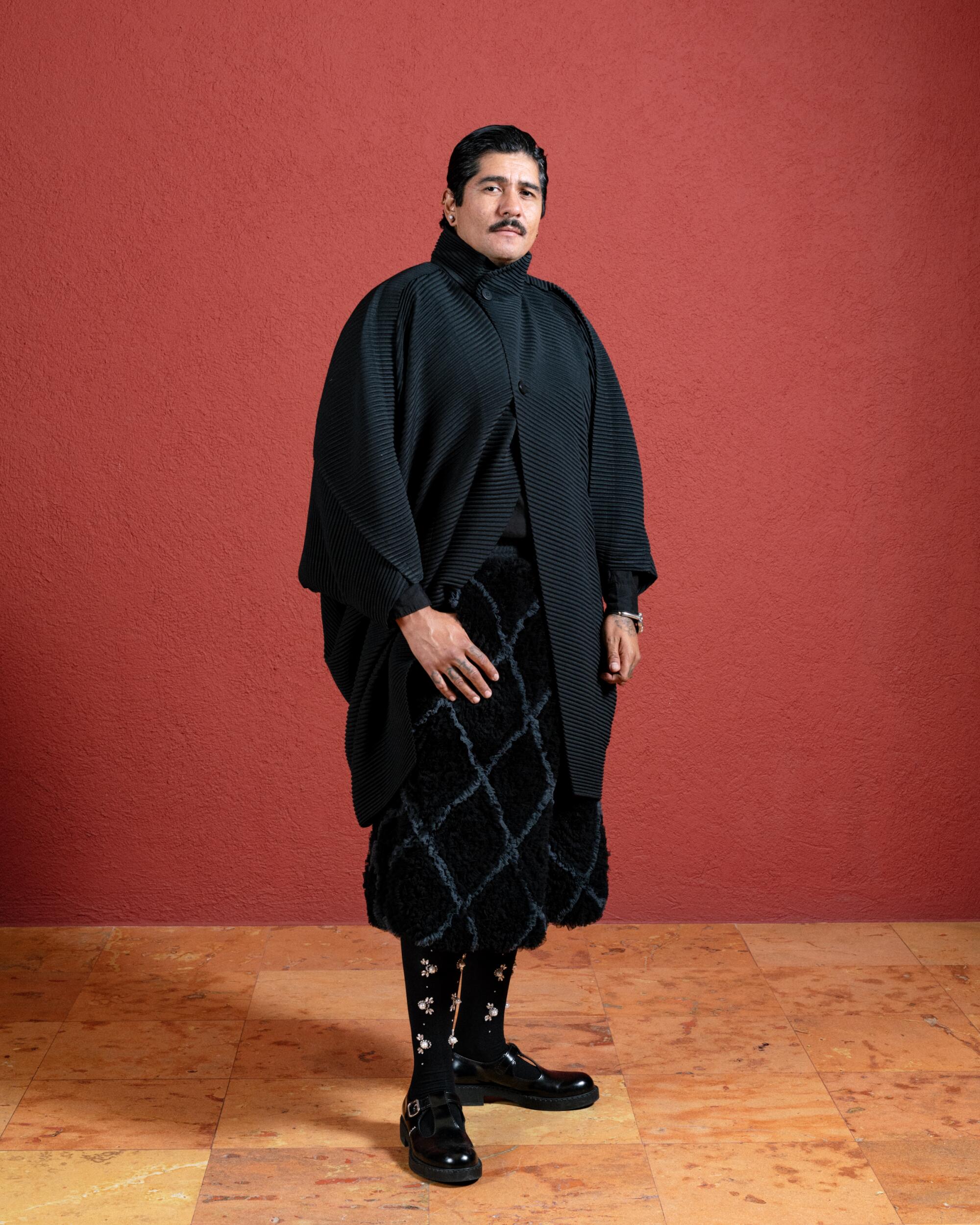
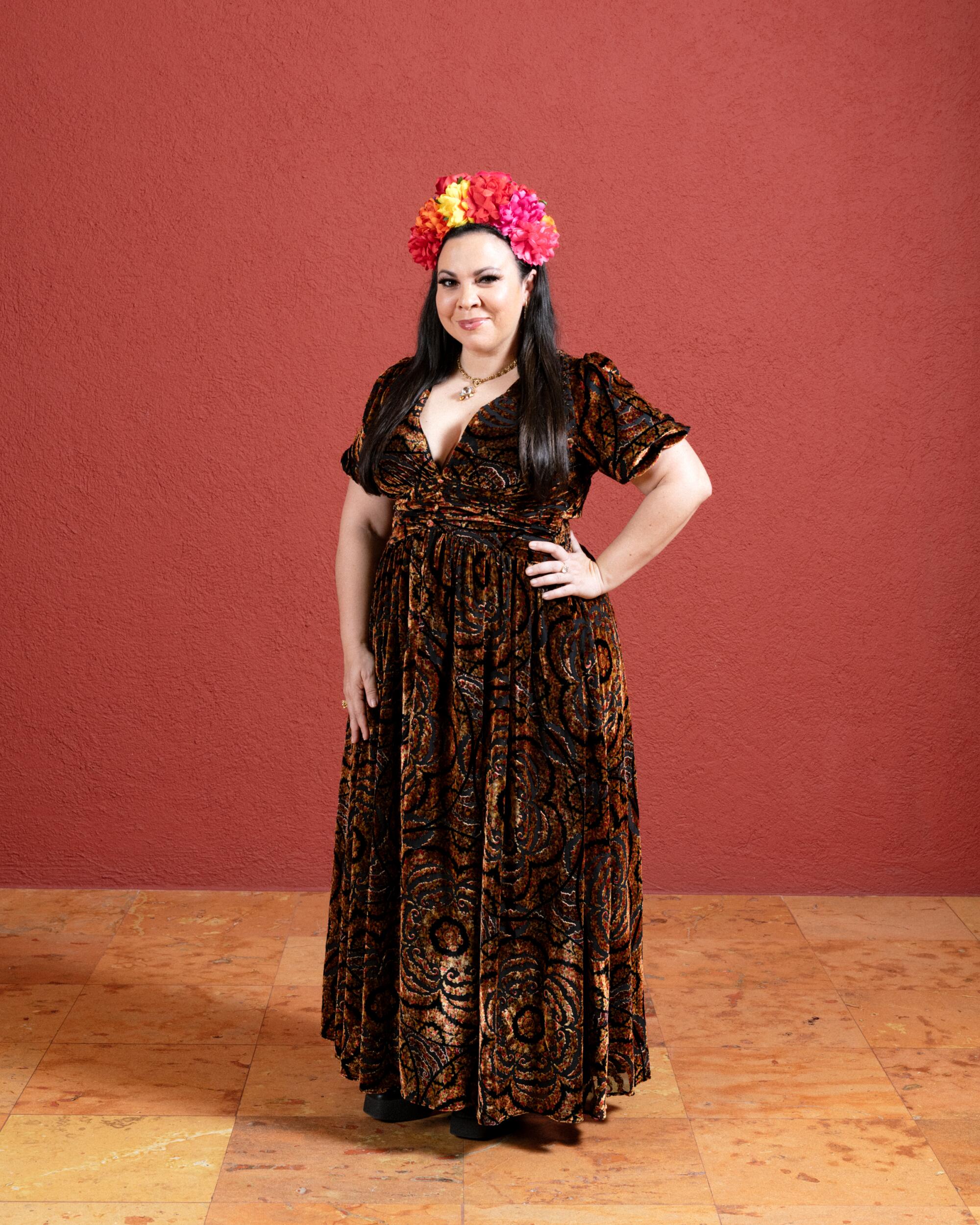

We’re working with so many artists from different parts of East L.A. — from Boyle Heights, from Highland Park, from Southgate, from Monrovia — that are all coming out to showcase their talents. Everyone from Eric Mancha, who painted a collaboration that we worked on together of one of his friends wearing a Latinx designer in Día de Muertos face paint. We’re going to give away Don Julio bottles at the end that to all the guests that Javier H. Ruiz and Eric Mancha will be painting signature art pieces on, which is actually going to be a picture of my face in Día de Muertos face paint.
The [location, Casa De Plata] was important to me. Luis Barragán, who’s one of the most famous Mexican architects, it was built by his protege, Ricardo Legorreta. I feel like that goes back and roots and heritage.
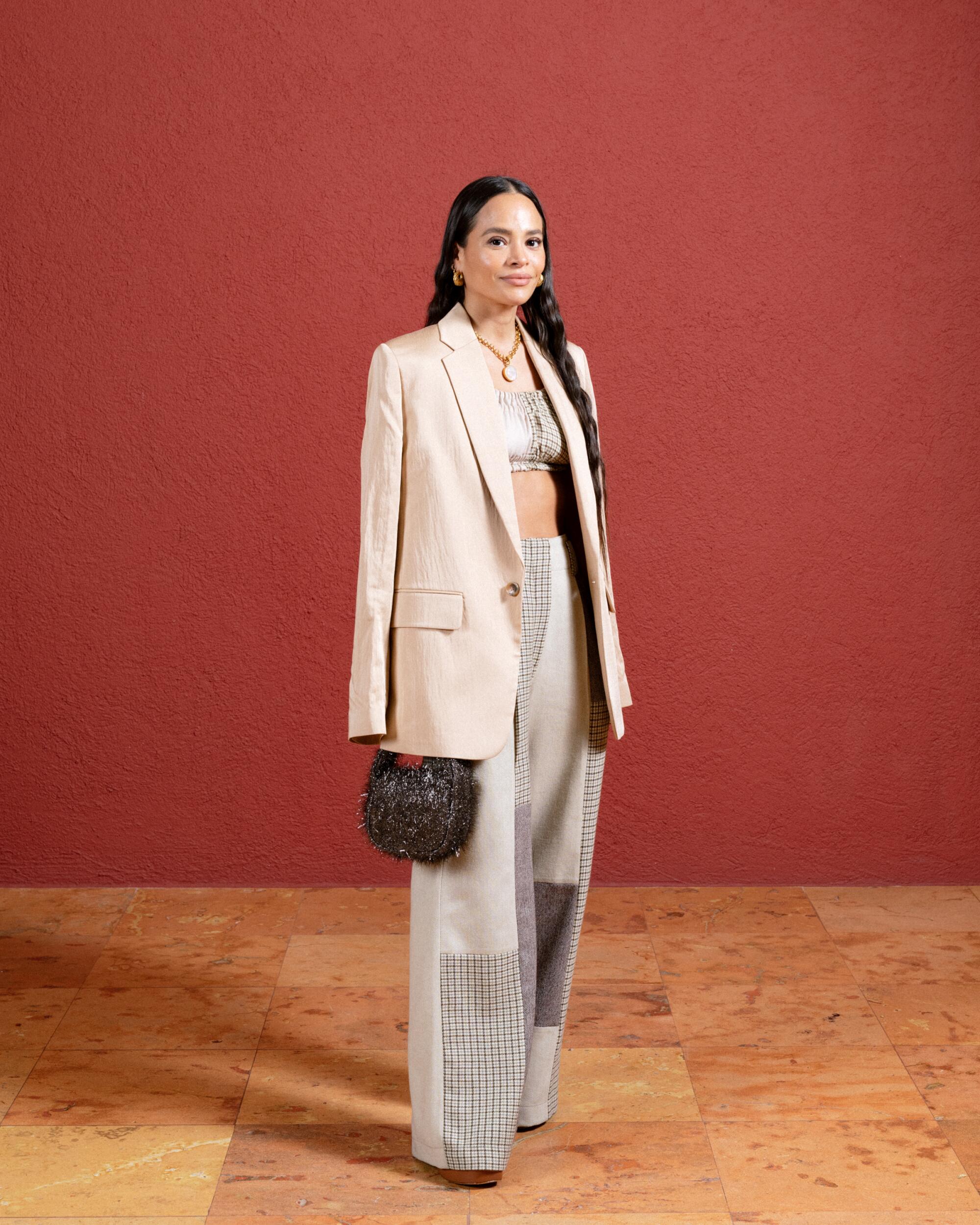
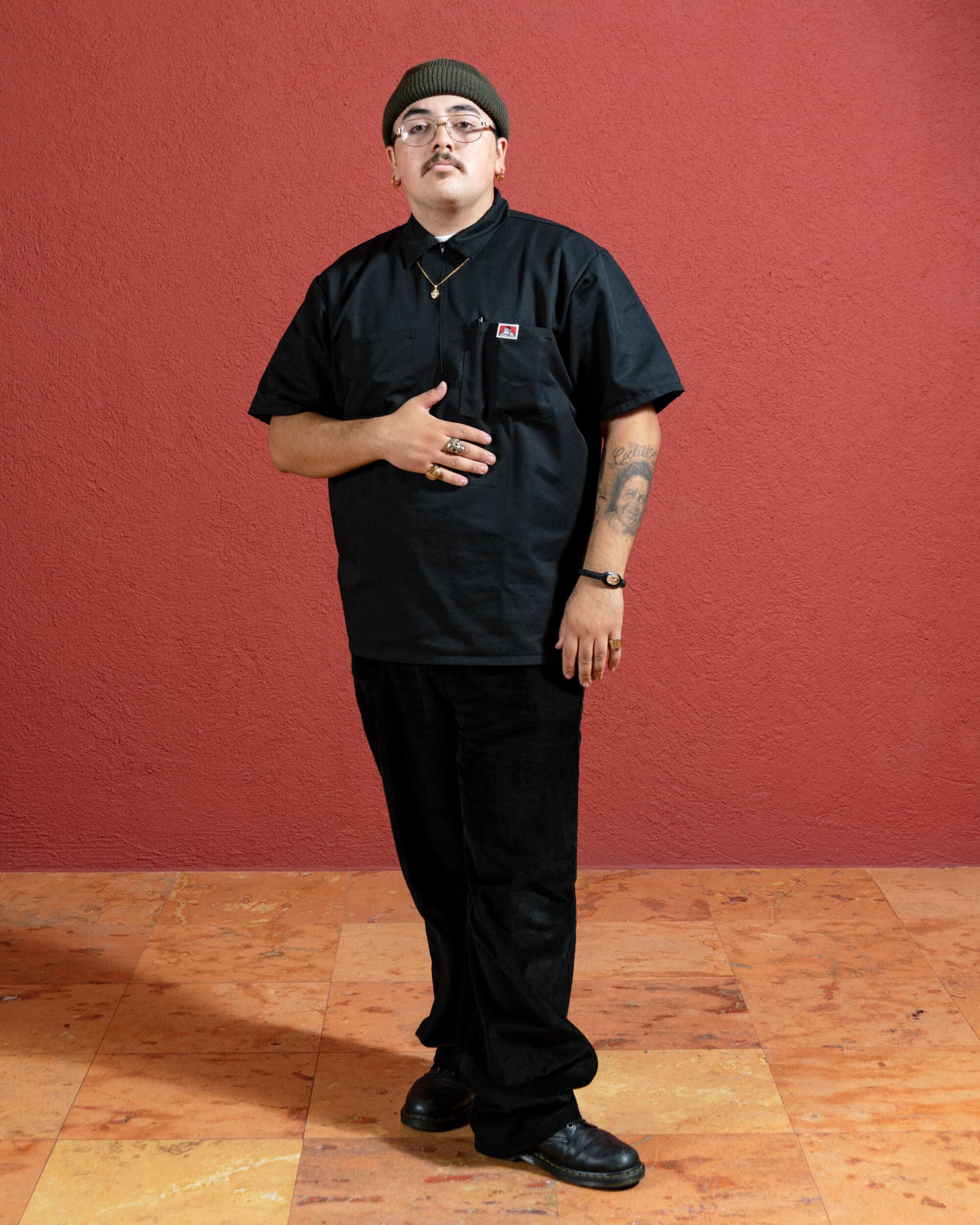


Everything educational, but not educational in a way where it’s being forced down your throat. Educational where you can feel it, you can touch it, you can smell it, you can see it. If you like it, you can continue to research it, you can continue to buy it, you can tag these people so they can be highlighted.
I think subliminally or not, throughout my life I’ve been trying to create this family. And during this dinner, it is it feels like I’m creating a world that is mi familia. I’ve gotten close to so many of these artists, working and collaborating with them on this dinner and this event. I had Eddie Lopez Bautista come in from Mexico City, where he was living for a year working with a designer. I was like, “It’s important that you’re here. You are so inspirational to me and you helped me meet a lot of people within your group of friends.” He’s also helping me curate a lot and giving me a lot of ideas. It’s just exciting to have this feeling of family — he reminds me of a primo that I used to have. It’s so family-oriented without even thinking twice. And that’s really exciting.
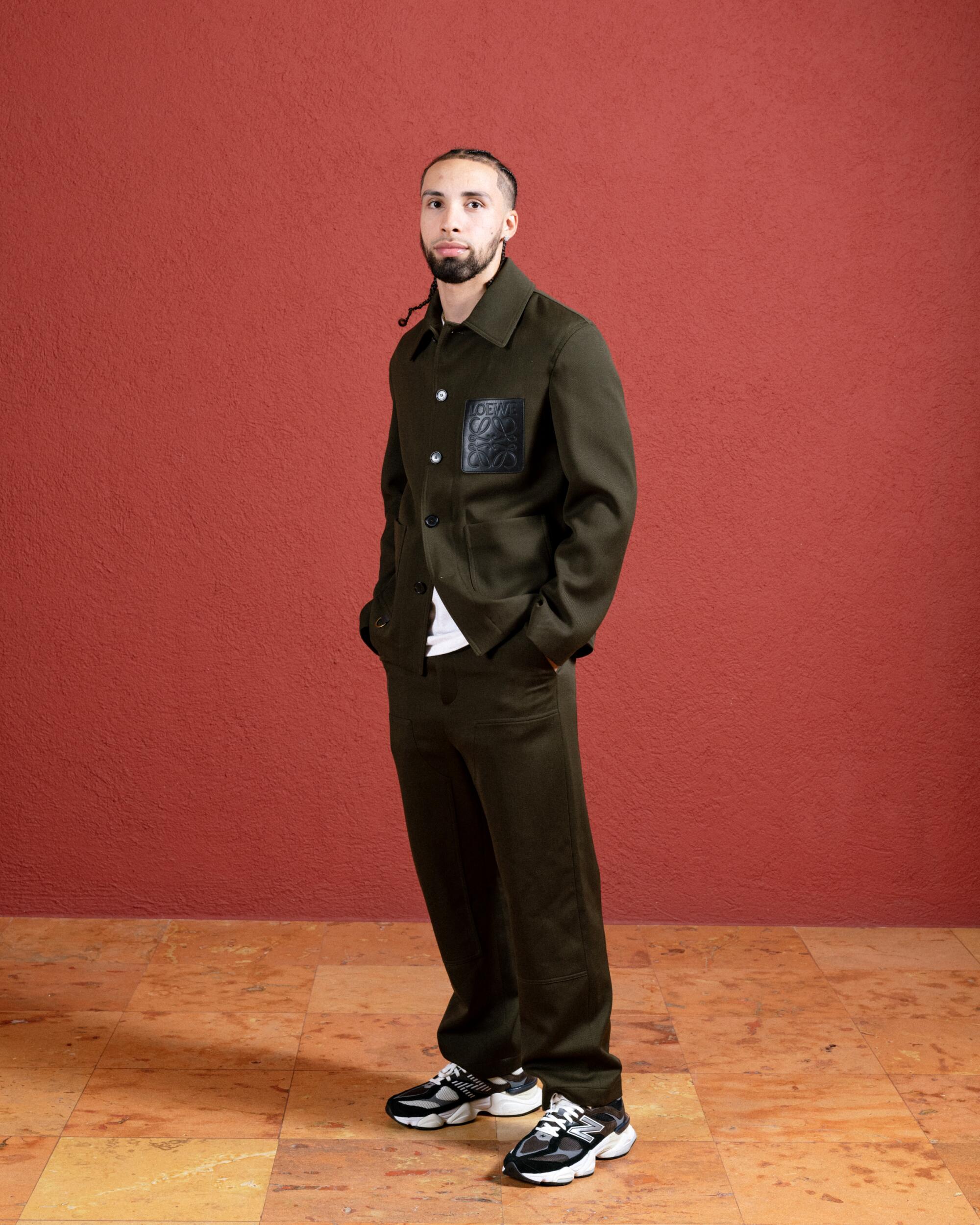
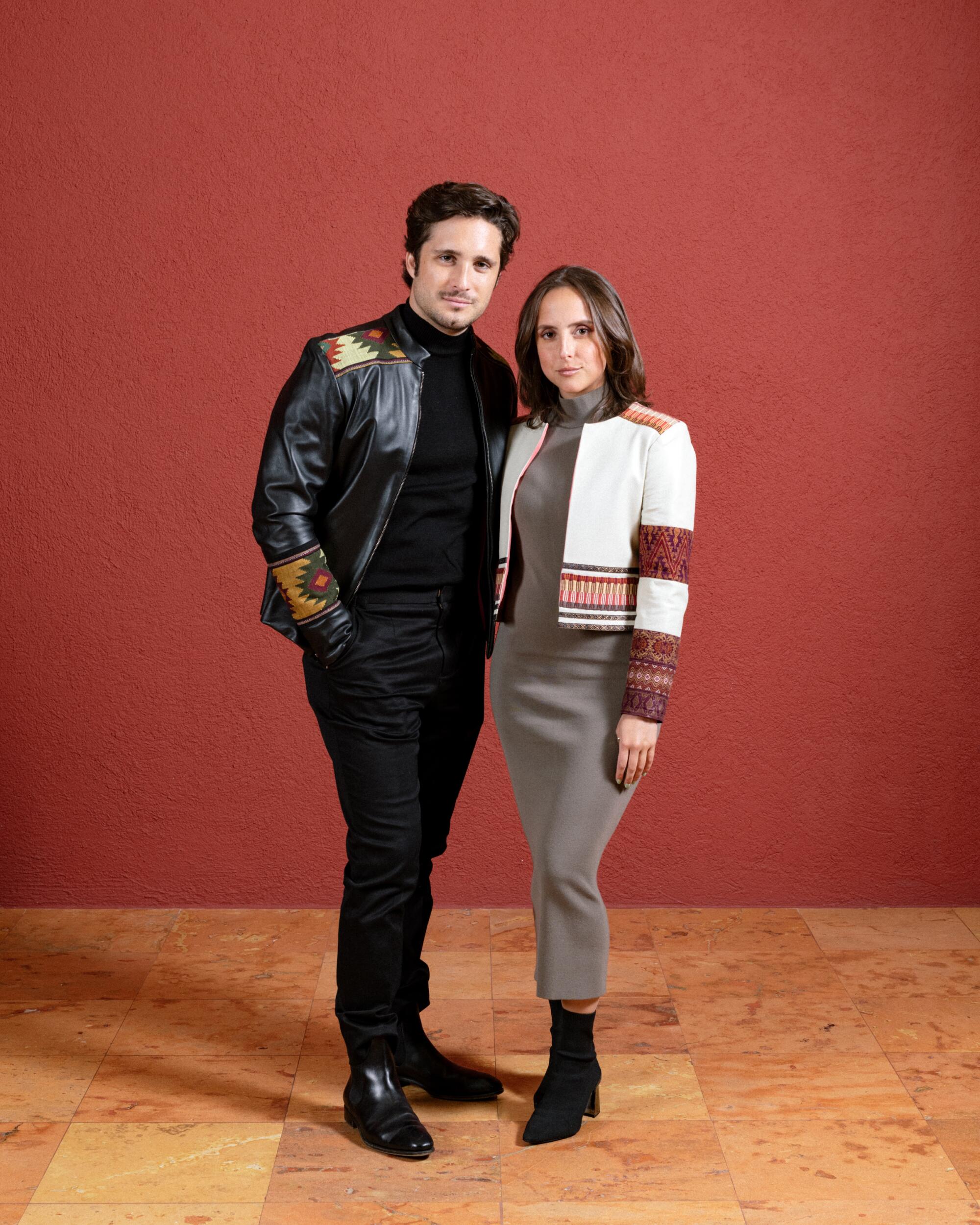

When it comes to the actual celebration, with the ofrenda and the dinner, this was somewhat of a new tradition that I’m creating for myself, for my family for my friends. It just feels so important because having have lost so much family in my life, this is a way I can really stay connected to them, remember them, celebrate them. And it’s also healing process for me, even though it’s been 25 years since I lost my mother. It’s a time that I get to work and prepare a table for them.
I’m hoping that I keep it together because I might — I’m pretty sure — I’m going to be emotional.
Carlos Eric Lopez is a fine art and celebrity photographer.



